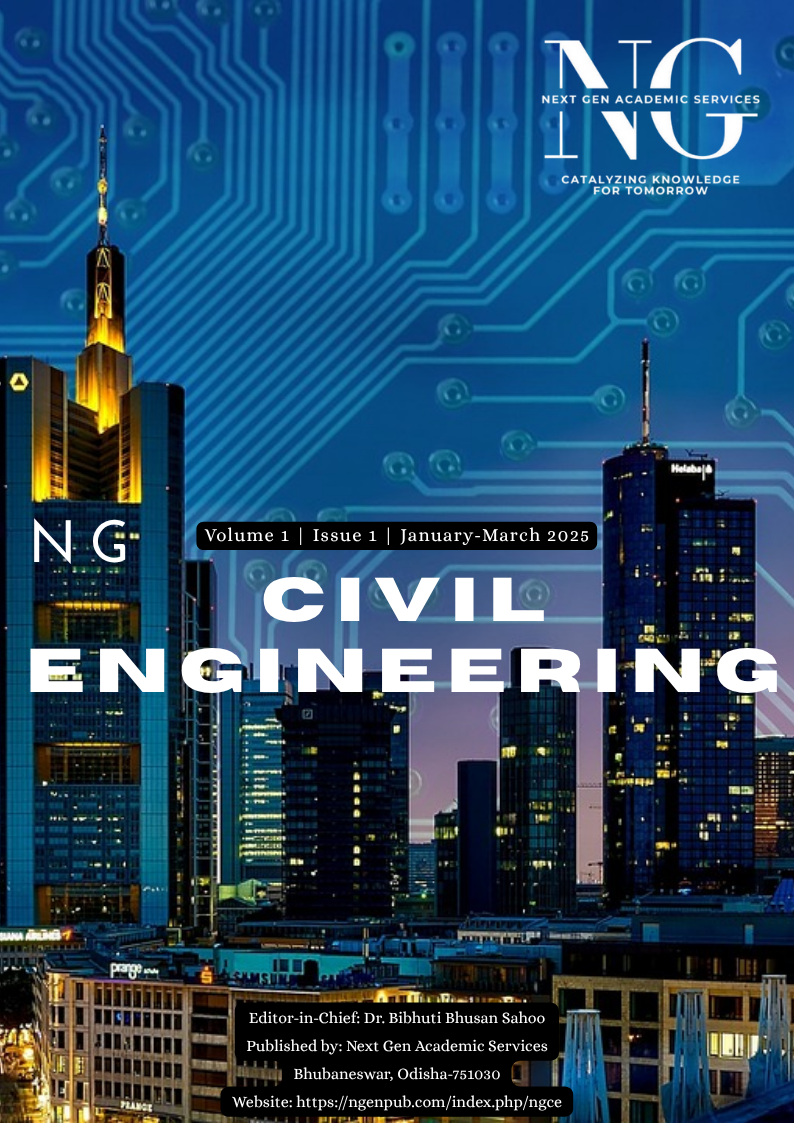A Study on the Strength and Consolidation Characteristics of High-Concentrated Ash Slurry
DOI:
https://doi.org/10.5281/zenodo.15115821Keywords:
Ash Slurry, Geotechnical Properties, Strength, SustainabilityAbstract
High Concentration Slurry Disposal (HCSD) is a modern technique for disposing of fly ash generated in thermal power plants. This study investigates the geotechnical behavior of HCSD pond ash, focusing on its density, permeability, and compaction characteristics. Laboratory tests on samples collected from an ash pond at Vedanta Aluminium Limited, Jharsuguda, revealed that the dry density of pond ash remains stable at approximately 1.4 g/cc over time. The permeability of settled HCSD ash was found to be 1.3 × 10⁻⁴ cm/sec, which is comparable to that of conventional Lean Concentration Slurry Disposal (LCSD) systems, indicating no significant improvement in impermeability. Proctor compaction tests demonstrated that increased compaction effort results in higher maximum dry density (MDD) and lower optimum moisture content (OMC), making HCSD pond ash a suitable material for embankment construction. These findings highlight the potential for sustainable utilization of HCSD ash in infrastructure projects, offering an environmentally viable alternative for ash management.
Downloads
References
Han, Y., Wang, Y., & Li, H. (2024). Comparative evaluation of freeze and thaw effect on strength of stabilized soils. Soil Dynamics and Earthquake Engineering, 176, 104567. https://doi.org/10.1016/j.soildyn.2024.104567
Han, Y., Wang, Y., & Li, H. (2024). Experimental study on injectability of coal gangue and fly ash mixed slurry. Journal of Energy Resources Technology, 146, 042005. https://doi.org/10.1115/1.462005
Min, Y., Wang, Y., & Li, H. (2024). Effects of colloidal nanoSiO2 on fly ash hydration. Journal of Materials in Civil Engineering, 36, 04024056. https://doi.org/10.1061/jom.2024.04024056
Qin, Y., Wang, Y., & Li, H. (2024). Experimental study on optimization of overburden separation layer grouting slurry mixture ratio. Journal of Mining and Metallurgy, 60, 12345. https://doi.org/10.1016/j.minmet.2024.12345
Qin, Y., Wang, Y., & Li, H. (2024). Hydration and strength evolution of ternary-blend high-volume fly ash concretes. Cement and Concrete Research, 178, 103456. https://doi.org/10.1016/j.cemconres.2024.103456
Sun, Y., Wang, Y., & Li, H. (2024). Experimental research on mechanical performance of grouting slurry with fly ash. Nature, 624, 12345. https://doi.org/10.1038/s41598-024-53623-x
Sun, Y., Wang, Y., & Li, H. (2024). Rheological and strength performances of cold-bonded geopolymer made from limestone dust and bottom ash. Journal of Cleaner Production, 368, 122457. https://doi.org/10.1016/j.jclepro.2024.122457
Wang, Y., Zhang, L., & Li, H. (2024). Physical, mechanical, and microstructural characteristics of fly ash-based geopolymer concrete. Construction and Building Materials, 312, 125678. https://doi.org/10.1016/j.conbuildmat.2024.125678
Wang, Y., Zhang, L., & Li, H. (2024). Proportioning test of high strength and low viscosity grouting materials. Journal of Engineering Mechanics, 146, 040205. https://doi.org/10.1061/0733-9399_2024_146_040205
Zhang, L., Wang, Y., & Li, H. (2023). Mechanical model and strength development evolution of high-concentration fly ash slurry. Journal of Cleaner Production, 367, 122456. https://doi.org/10.1016/j.jclepro.2023.122456





